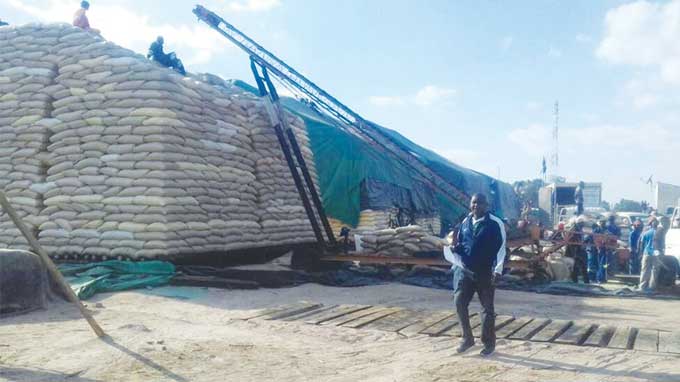
By Business Writer/NewZWire
ZIMBABWE’S maize output will be 43% less than last year, according to a new government estimate.
This leaves a deficit of 300 000 tonnes that may have to be filled by imports.
With prices of maize rising around the world, imports would add further pressure on the exchange rate and inflation.
Maize production is estimated at 1,5 million metric tonnes, compared to the 2,7 million metric tonnes that government says Zimbabwe produced last year, Cabinet said.
This was due to late rains across the country this season, the second round crop assessment showed.
In April, the International Monetary Fund (IMF) said up to five million Zimbabwe will be food in secure this year following the poor agricultural season.
Effects of drought have been compounded by Zimbabwe’s economic meltdown, which has been highlighted foreign currency shortages, high inflation and exchange rate volatilities.
- Chamisa under fire over US$120K donation
- Mavhunga puts DeMbare into Chibuku quarterfinals
- Pension funds bet on Cabora Bassa oilfields
- Councils defy govt fire tender directive
Keep Reading
“This late onset of the rains caused late plantings, which were later affected by the prolonged dry spell.
“Some farmers were also forced to make several re-plantings as a result of poor crop establishment and the false start to the season,” Cabinet said.
Last year, the best harvest in years convinced Zimbabwe to stop all maize imports.
The ban was lifted in February as poor rains pointed to a smaller harvest.
The Grain Marketing Board has enough strategic grain in stock, but private millers may have to import to meet their demands for maize meal and stockfeed.
“The millers and stockfeed manufacturers, on the other hand, are urged to use their free funds to import the bulk of the 300 000 metric tonnes grain in order to meet their requirements,” said Cabinet.
The price of maize has been rising around the world.
This means Zimbabwe will need more US dollars to import maize, which may further destabilise a currency already in free-fall.
World food commodity prices are at their highest levels ever due to the Ukraine war.
The FAO’s Food Price Index, which tracks the prices of stable grains and commodities, reached an all-time high in March.
“Elevated and rising commodity prices will place upward pressure on domestic inflation, and slowdown economic growth,” according to FEWSNET, which monitors food security in the region.
National Foods, the country’s biggest food manufacturer, said it expected to take in less maize this year due to erratic rainfall and the result of more households holding on to their grain.










